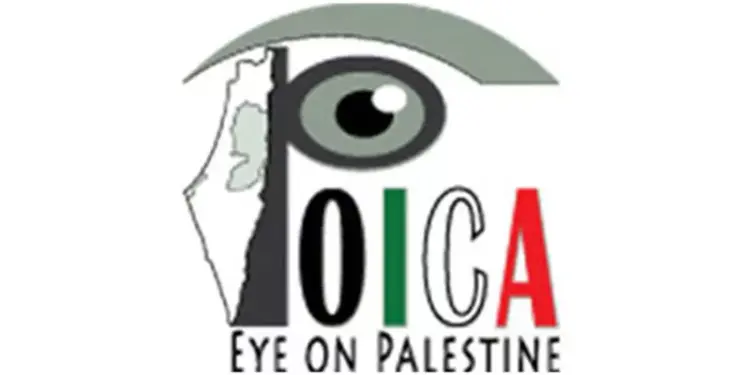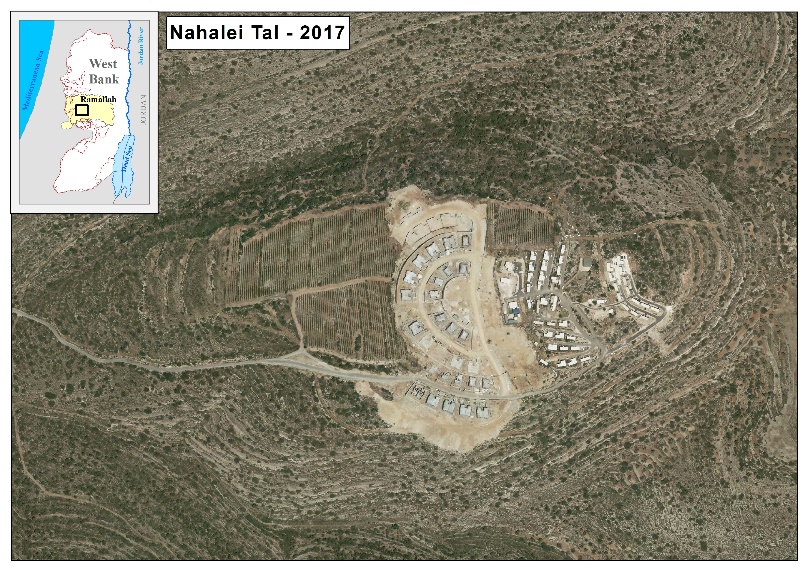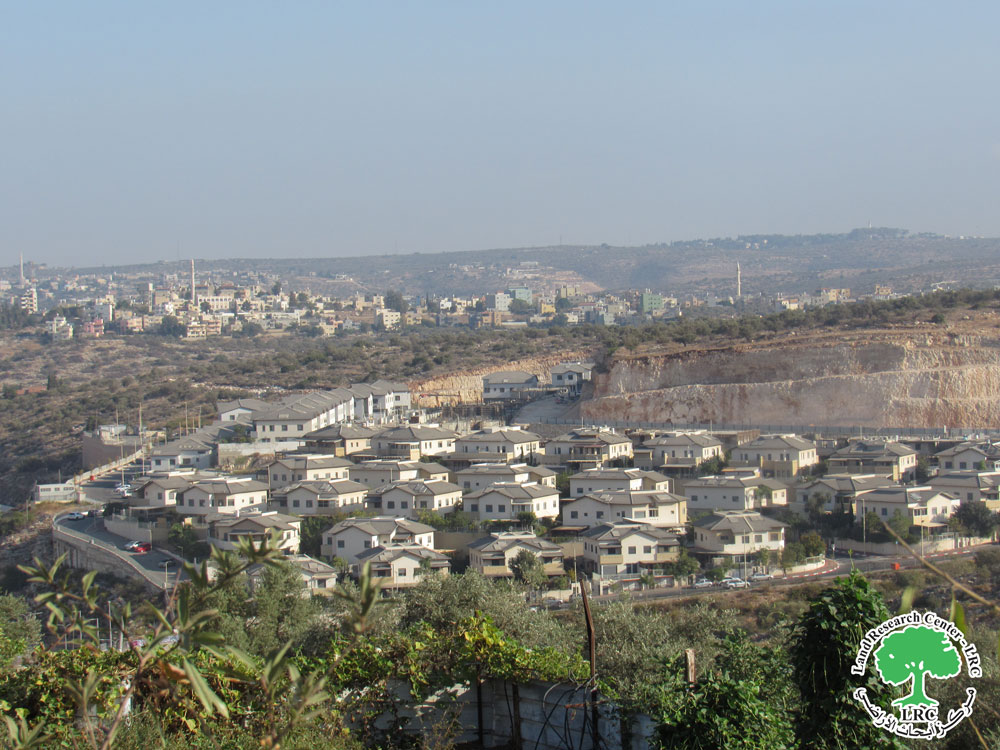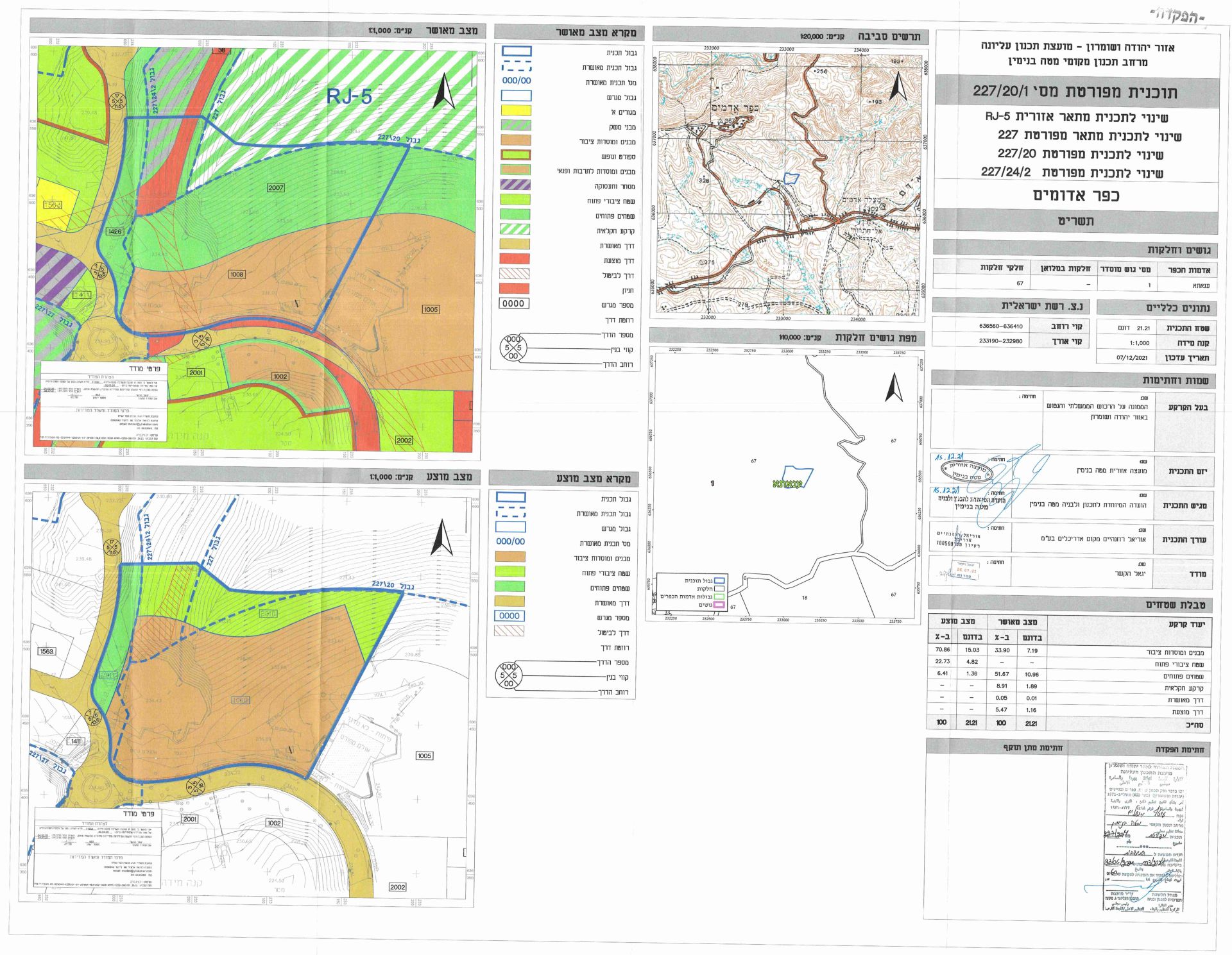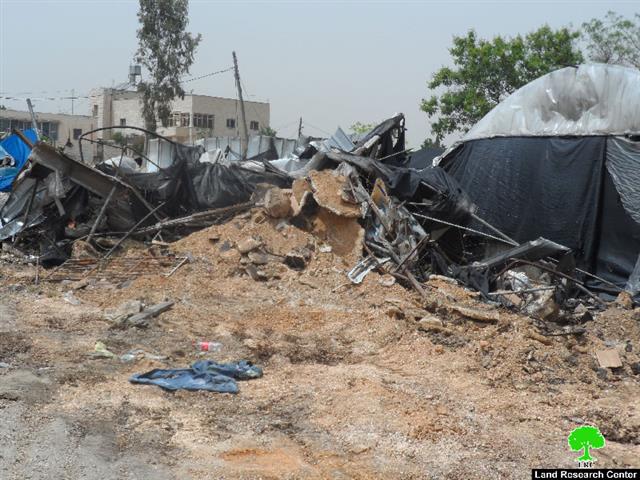On the 11th of March, 2014, the Israeli occupation Authorities published tenders to build around 2400 housing units in eight Israeli settlements in the occupied West Bank. The tenders targeted the following settlements: Ariel in Salfit Governorates with 839 units to be built in the settlement; the new Israeli colonial neighborhood in Alei Zahav settlement in Salfit Governorate, Leshem, with 694 units to be built in the neighborhood; Shevut Rahel (Mitzpe Rahel) with 353 units to be built in the settlement; Beit El in Ramallah Governorate with 296 units to be built in the settlement; Shavei Shomron in Nablus Governorate with 65 units to be built in the settlement; Giv’at Ze’ev in Jerusalem Governorate with 56 units to be built in the settlement; Kochav Yaccov in Jerusalem Governorate with 38 units to be built in the settlement and Almog in Jericho Governorate, with 31 units to be built in the settlement. See Table 1
|
Table 1: Plans and Tenders in Israeli Settlements in the occupied West Bank |
||||
|
Governorate |
No. of housing units |
Plan No. |
Settlement Name |
No. |
|
Jericho |
31 |
604/4 |
Almog |
1 |
|
Jerusalem |
38 |
242/1/3 |
Kochav Yaccov |
2 |
|
Jerusalem |
56 |
220/10/5 |
Giv’at Zeev |
3 |
|
Nablus |
65 |
111/1/3 |
Shavei Shomron |
4 |
|
Ramallah |
296 |
218/18 |
Beit El |
5 |
|
Nablus |
353 |
205/2 |
Shevut Rahel |
6 |
|
Salfit |
694 |
132/6 |
The New neighborhood, Leshem, Alei Zahav Settlement |
7 |
|
Salfit |
839 |
130/8 |
Ariel |
8 |
|
|
2372 |
Total |
||
|
Israeli PEACENOW Movement, 2014 |
||||
Analysis of the announced plans shows that three out of the targeted eight settlements (Ariel, Leshem neighborhood in Alei Zahav settlement, and Giv’at Zeev) are located in the area known today to the Palestinians as the Western Segregation Zone, which is the area located between the 1949 Armistice line and the route of the segregation wall. Note that Israel plans to annex this area to its current illegal and unilateral borders through the construction of the Segregation Wall.
Ariel settlement is one among 16 Israeli settlements comprising the Ariel-Kedumim settlement bloc. in Salfit Governorate; It occupies a total land area of 5280 dunums that were originally confiscated from Marda, Salfit, Iskaka and Kifl Hareth villages in Salfit Governorate. Today, the settlement is home to 19544 Israeli settlers (pop. 2011).
While the Giv’at Zeev settlement is also one among four Israeli settlements comprising the Giv’at Ze’ev settlement bloc. which borders Jerusalem city from its northwestern side. With the construction of the Segregation Wall, Israel seeks to annex three major settlement blocs that surround Jerusalem city to become the new and illegal boundaries of Jerusalem Municipality upon wall completion; the blocs are Giv’at Zeev, Ma’ale Adumim settlement bloc in the east of Jerusalem and the Gush Etzion settlement bloc in the southwest; At the same time, the construction of the wall around Jerusalem city sets 12 Palestinian communities outside the borders of Jerusalem Municipality with the aim of imposing a Jewish majority in the city while minimizing the number of Palestinians living in it.
Additionally, on the 25th of August 2013, the Israeli Housing Minister, Uri Ariel, celebrated the inauguration of a new Israeli neighborhood, Leshem (currently under construction – 100 units were already built) in Alei Zahav settlement, in Salfit Governorate. During the ceremony, the minister (Uri Ariel), stated that the Leshem neighborhood is “Formally part of an existing settlement, but will function as a separate community for all intents and purposes, and we shouldn’t be afraid to say it."[1]
The settlements of Beit El and Kochav Yacoov
During the US work to outline a framework peace agreement between the Israelis and the Palestinians, the Israeli daily newspaper Haaretz reported that the Israeli Prime Minister Benjamin Netanyahu demanded that Israel maintains control over a fourth settlement bloc in the West Bank in addition to three other settlement blocs[2] that it has already asked during negotiations with the U.S. Secretary of State, Mr. John Kerry. The settlement bloc which Israel demands to annex, is the Beit El bloc, which also includes the settlements of Pesagot, Ofra, Ma’ale Mikhmas, Sha’are Benjamin (Adam) in addition to Beit El and Kochav Yacoov settlements. Such a move will ensure the annexation of more Israeli settlements located east of the wall to the illegal and unilateral borders of Israel.
Furthermore, Israel's constant building in the settlement of Beit El, in particular, sends a clear message that Israel will not give up the settlement of Beit El, which is the backbone of Israeli settlements in that area (according to Israel), and this was so evident in the Israeli Prime Minister’s declaration, Benjamin Netanyahu, on the sixth of January, 2014 at a Likud faction meeting when he said, "We will not forgo places that others have relinquished in the past”…. Hebron and Beit El are not part of settlement blocs, but "they are important to the Jewish people," and will not be evacuated.” (Haaretz, 2014). See Map 1
Map 1: The Beit El settlement Bloc. in Ramallah Governorate
Shevut Rahel (Mitzpe Rahel) settlement
The settlement of Shevut Rachel (Mitzpe Rachel) is located in the area defined by Israel as the "corridors area". Israel is trying to impose its control over the Israeli settlements in the corridors area so that at the end, it will annex as many settlements and outposts as possible to its proper before reaching an agreement with the Palestinians and will negotiate over the evacuation of an insignificant number of Israeli settlements and settlers from the West Bank Territory.
It should be noted that 31 Israeli settlement are located in the Israeli corridors area, and make up an area of 35.3 sq.k (18.1 % of the total area of the settlements in the West Bank, amounting to 194.7 sq.k). Additionally, The population of Israeli settlements located in the corridors area is 52282 Israeli settlers (2011), representing 7.5 % of the total population of settlers in the occupied West Bank (amounting to 690 thousand settlers).
As for Almog Settlement, it is located in the eastern terrains of the occupied West Bank territory which Israel intends to transform into a de-facto Eastern Segregation Zone. However, since the Segregation Wall system didn’t not apply there due to the physical characteristics of the area, Israel sought to create a system of controlled access checkpoints established along the Jordan Valley and the shores of the Dead Sea to increase the suffering of the Palestinian people living there and consequently driving them out of the area. Additionally, Israel does not intend to abandon the eastern part of the West Bank due to its strategic importance as a security barrier in front of what Israel considers as "the Eastern Front' to fulfill the basic security requirements of its citizens.
Today, 36 Israeli settlements occupying 38.4 km² of Palestinian land are in the Jordan Valley area. They constitute 19.7% of the total Israeli settlements’ area in the occupied West Bank, which is 194.7 km². The 36 settlements are inhabited by 13181 Israeli settlements, 1.9% of the total Israeli settlers population in the occupied West Bank, including those in East Jerusalem.
Additionally, the location of Shavei Shomron settlement in Nablus Governorate is no less important[3] than the rest of the targeted Israeli settlements[4] despite the fact that the settlement is not among the list of Israeli settlements Israel seeks to annex to its border on the western side of the West Bank ( through the construction of the segregation wall), neither it is among the list of Israeli settlements located in the eastern Segregation Zone (the eastern part of the West Bank), but it seems that Israel does not intend to include Shavei Shomron settlement in any future peace agreement with the Palestinians. Today, the settlement occupies an area of 889 dunums of Deir Sharaf, Ras An Naqura and Sebastyia villages, with a population of approximately 800 Israeli settlers.
Note that in the year 2005, the Israeli occupation Authorities issued a military order no. 05/165/t to confiscate 53.4 dunums of land surrounding Shavei Shomron settlement. The order states the establishment of a buffer zone around the settlement of Shavei Shormon. The order, not only threatens 53 dunums of land, but it threatens to confiscate hundreds of dunums of land located between the settlement’s built-up area and the border of the buffer zone that appears in the attached map below. See Photo 1 & Photo 2
Additionally, the Shavei Shomron settlement along with Kochav Yaacov, Beit El, Ariel, Alei Zahav and Almog are included in the national Priority areas list which the Israeli cabinet approved on December 12, 2009 and stated to give funding to 557 Israeli communities including 90 Israeli settlements in the occupied West Bank, in the fields of education, housing, employment and infrastructure. The total budget of the overall plan is about 2 billion shekels, of which 110 million shekels were designated for Israeli settlements in the West Bank.
Later on January 29, 2012, The Israeli government gave a final approval to the “National Priority Areas” plan. According to the map of national priority areas adopted by the Israeli government, only 70 illegal Israeli settlements in the West Bank out of 90 settlements were targeted in the approval stage, and will benefit from the cabinet's decision. See Map 2
To conclude,
In light of the negotiations crisis between Israel and the Palestinians , it does not seem that Israel is trying to control its addiction to settlement building and expansion in the occupied Palestinian territory.
Israel’s Settlement program sends a clear and explicit message to the Palestinians that settlement construction will not stop under any circumstances , and that Israel’s top priority is the annexation of the largest possible number of Israeli settlements in the occupied West Bank to its border. As well, the continuation of settlement construction deepens the gap between the two sides (the Palestinian and the Israeli) and carries significant risks affecting the rights of all Palestinians .
[1] Jerusalem pushes forth with settlement plans
http://www.ynetnews.com/articles/0,7340,L-4422127,00.html
[2] Ariel-Kedumim, Gush Etzion and Ma'aleh Adumim. Apparently, Israel also seeks to annex two other major settlement blocs in the West Bank through the construction of the wall, they are, Modi’in Illit (Kiryat Sefer) west of Ramallah and Giv’at Ze’ev settlement bloc in the northwestern part of Jerusalem.
[3] To Israel
[4] settlements targeted with construction plans
Prepared By
The Applied Research Institute – Jerusalem
ARIJ

